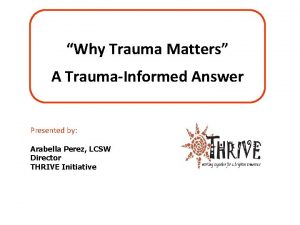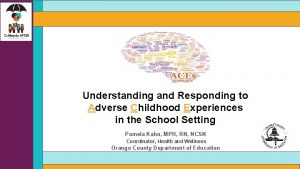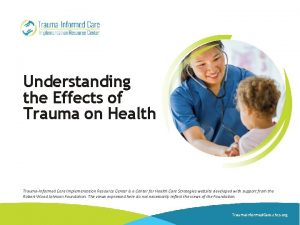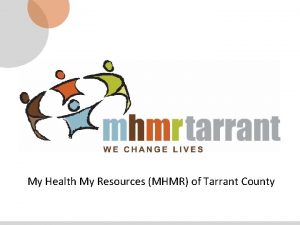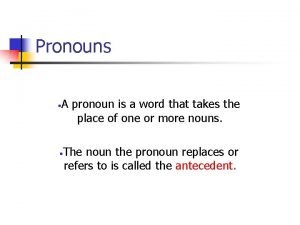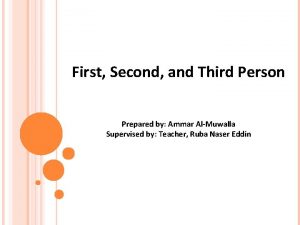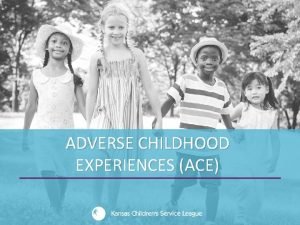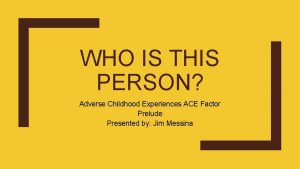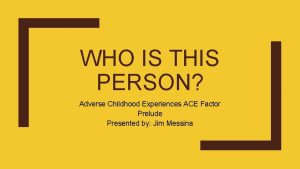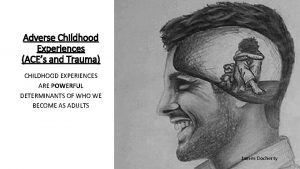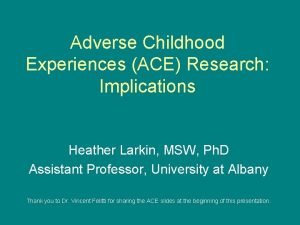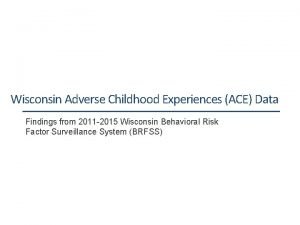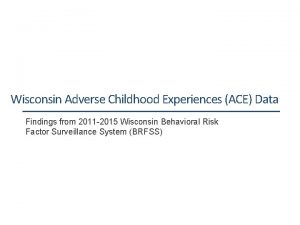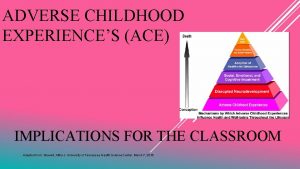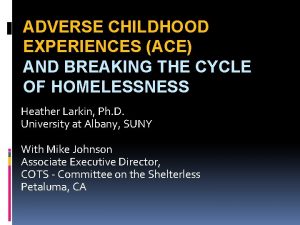WHO IS THIS PERSON Adverse Childhood Experiences ACE










- Slides: 10

WHO IS THIS PERSON? Adverse Childhood Experiences ACE Factor Prelude Presented by: Jim Messina

Relevant ACE (Adverse Childhood Experiences) Abuse _x_ 1. Emotional Abuse __ 2. Physical Abuse __ 3. Sexual Abuse Neglect _x_ 4. Emotional Neglect _x_ 5. Physical Neglect Household Dysfunction _x_ 6. Mother was treated violently _x_ 7. Household substance abuse _x_ 8. Household mental illness _x_ 9. Parental separation or divorce _x_ 10. Incarcerated household member

This Person’s Clinical Diagnosis Principal Diagnosis F 60. 2 Antisocial Personality Disorder F 63. 0 Gambling Disorder Persistent, Severe F 22 Delusional Disorder Specify grandiose & Persecutory mixed type, Provisional Diagnosis F 25. 1 Schizoaffective Disorder Depressive Type F 60. 6 Avoidant Personality Disorder F 40. 10 Social Anxiety Disorder (Social Phobia)

Other Conditions That May Be a Focus of Clinical Attention Z 62. 811 Personal history of psychological abuse in childhood Z 69. 812 Personal history of neglect in childhood Z 91. 49 Other personal history of psychological trauma Z 62. 820 Parent-child relational problem Z 62. 891 Sibling relational problem Z 62. 29 Upbringing away from parent Z 63. 5 Disruption of family by separation or divorce Z 63. 8 High expressed emotion level within family Z 62. 898 Child affected by parental relationship distress Z 59. 9 Unspecified housing or economic problems Z 91. 89 Other personal risk factors Z 65. 1 Imprisonment or other Incarceration of parent

Thing we know about this Person ■ Avoids Contact with people in all aspects of his life ■ Was married and divorced twice. He was first married from 1977 to 1979, and for the second time from 1985 to 1990, both marriages in Los Angeles County, California. SO WHO IS HE? and WHY are ACE FACTORS Important in His Case?

Stephen Craig Paddock April 9, 1953 – October 1, 2017 The American mass murderer who committed the 2017 Las Vegas Strip shooting.

What we do know about Stephen Paddock’s Background ■ Stephen was the oldest of four boys his mother age 90 lives with his brother Eric in Orlando ■ His father Benjamin was a bank robber who was arrested in 1960 when Stephen was seven years old ■ His father Benjamin was later convicted and escaped prison in 1969, subsequently appearing on the FBI's most-wanted list. Stephen was 15 years old at the time. When the father was on the run, the FBI warned that he was both psychotic and suicidal. ■ According to his brother Eric, they never really knew their father as he was never with their mother. One of Stephen’s brother has a a long track record of legal problems ■ Since 2010, he lived with a “kept” and submissive woman in Nevada ■ Spent up to 14 hours a day gambling on - His game of choice was solitary video poker which he had played for over 25 years; unlike traditional poker which involves bluffing, the primary skill is mathematical precision calculating odds. He lived a mostly nocturnal life, gambling after dark and sleeping during the day; he generally disliked being out in the sun. He was not well known among high-stakes gamblers in Las Vegas. He spent over $10, 000 a day gambling


More Insight into Stephen Paddock from 2013 Testimony in Lawsuit Paddock was deposed October 29, 2013 as part of a civil lawsuit against the Cosmopolitan Hotel, where he slipped and fell on a walkway in 2011. He was a nocturnal creature who gambled all night and slept all day. He took Valium at times for anxiousness, and had the doctor who prescribed it to him on retainer. He wagered up to a million dollars a night, but wandered around glitzy Las Vegas casinos in sweatpants and flip-flops, and carried his own drink into the high rollers' area because he didn't want to tip the waitresses too much. This was Stephen Paddock as he saw himself four years before he opened fire on a crowd of concertgoers, killing at least 58 people in the worst mass shooting in modern American history.

What can we learn from this case? People’s ACE Factors need to be identified by medical and other social services agencies who work with them and begin to treat the negative impact of their early traumatic lives If we as professionals know that a person has ACE Factors of 6 or higher there is a good chance that the person would be ripe for mental health issues, substance or addictive behaviors and poor health. Not all professionals are committed to the belief that ACE Factors play a part in the life of the adults they see for medical, physical or social concerns- We must be! We as professionals must avoid “Moral Judgements” about our clients once we recognize that their ACE Factors have contributed to the reasons for the problems for which they are working with us We must be alert, and when we see something, we must say something. We cannot afford to have a Stephen-Paddock-like-figure emerge from our clinical
 Schoolsworkpro
Schoolsworkpro Adverse childhood experiences study
Adverse childhood experiences study Slidetodoc.com
Slidetodoc.com Adverse childhood experiences study
Adverse childhood experiences study Adverse childhood experiences study
Adverse childhood experiences study Person person = new person()
Person person = new person() First person second person third person chart
First person second person third person chart Person plural or singular
Person plural or singular First person vs second person vs third person examples
First person vs second person vs third person examples Early childhood
Early childhood Worldwide one person in every experiences persistent hunger
Worldwide one person in every experiences persistent hunger

